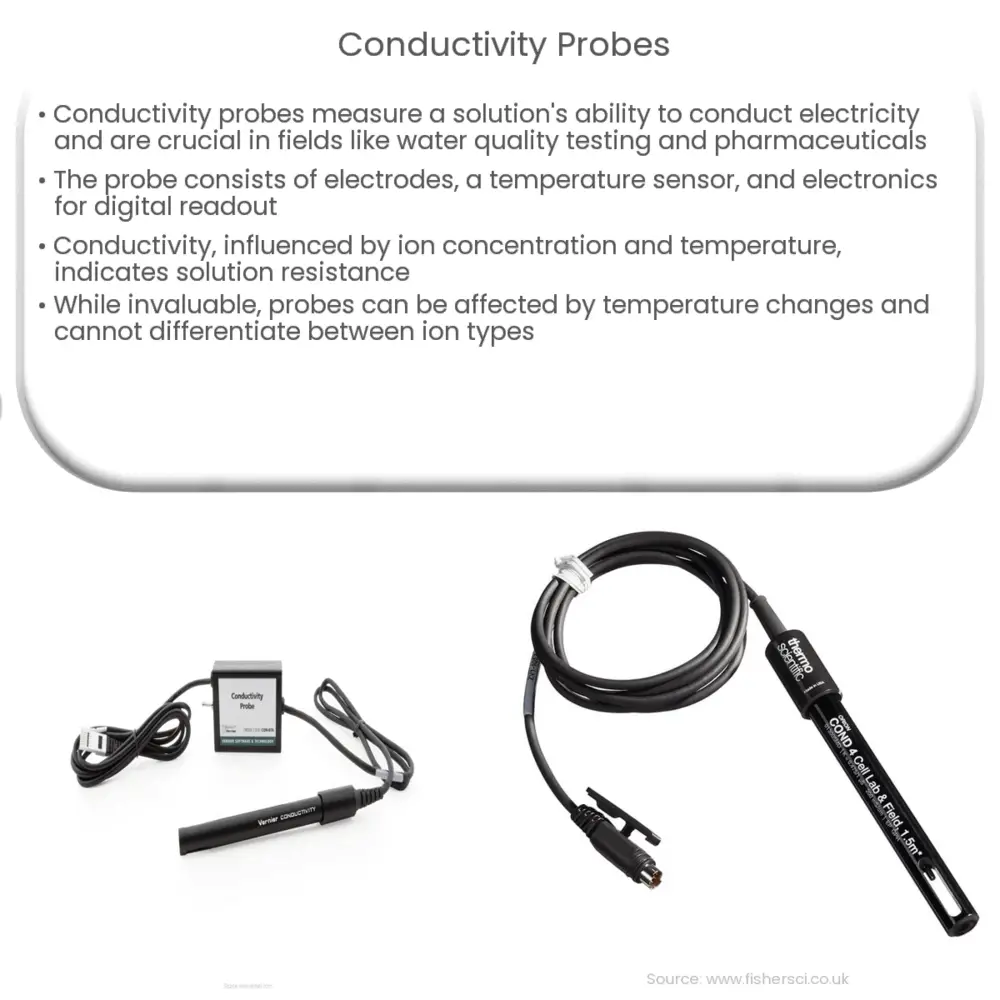Explore the functionality of conductivity probes, their applications across various industries, and the latest technological advancements.

Introduction to Conductivity Probes
Understanding the role and applications of conductivity probes can unlock a wealth of opportunities in various scientific disciplines. From industrial processes to environmental studies, the ability to measure the conductance of a solution is key in achieving accurate results and understanding complex phenomena.
What is a Conductivity Probe?
A conductivity probe is a specialized instrument that measures the ability of a solution to conduct electric current. It does this by emitting an electrical voltage and then measuring the resulting current flowing between two electrodes. This technology is crucial in numerous fields, including water quality testing, pharmaceuticals, brewing, and hydroponics, among others.
Components of a Conductivity Probe
- Electrodes: Two electrodes are typically positioned in close proximity within the probe. These electrodes apply a voltage to the solution and measure the resulting current.
- Temperature Sensor: Because conductivity is temperature-dependent, most probes incorporate a temperature sensor to account for temperature fluctuations.
- Electronics: This section of the probe converts the measured signal into a form that can be understood by a digital device or readout equipment.
Understanding Conductivity
Conductivity is a measure of a solution’s ability to conduct electricity. It is inversely proportional to the resistance between two points, meaning a higher conductivity indicates a lower resistance. This property is inherent in all aqueous solutions and is influenced by factors such as the concentration and type of ions in the solution, as well as the temperature.
Applications of Conductivity Probes
Conductivity probes find a wide array of applications in different fields. Here are a few key examples:
- Water Quality Testing: They’re used in the monitoring of freshwater bodies like lakes, rivers, and reservoirs to detect pollutants. High conductivity can suggest contamination from industrial effluents or agricultural run-off.
- Pharmaceutical Industry: In the pharmaceutical industry, these probes help ensure the purity of water used in manufacturing processes.
- Aquaculture: In aquaculture, they’re used to monitor water conditions, ensuring optimal environments for marine life.
Calibration of Conductivity Probes
Like many scientific instruments, conductivity probes require regular calibration to ensure accuracy. Calibration involves the use of standard solutions with known conductivity values. Probes are submerged in these solutions, and the readouts are compared with the known values. If discrepancies are observed, adjustments are made to the probe’s settings.
Limitations of Conductivity Probes
While conductivity probes are incredibly useful tools, they do have certain limitations. One of the major challenges is the influence of temperature on conductivity measurements. While most probes include a temperature sensor to adjust for this, extreme temperature fluctuations can still lead to inaccuracies.
Another limitation is that conductivity probes cannot differentiate between different types of ions in a solution. For instance, if a solution contains a mix of sodium and potassium ions, the probe cannot distinguish between them – it simply measures the total conductance.
Recent Advances
Recent technological advances have led to the development of smart conductivity probes that offer greater accuracy and ease of use. These probes can interface directly with digital devices for real-time data collection and analysis. Furthermore, some of the latest probes feature self-calibration capabilities, significantly reducing the time and effort required for calibration.
Conclusion
In conclusion, conductivity probes are a versatile tool integral to a wide array of applications across numerous industries. Their primary role in measuring the conductivity of aqueous solutions enables scientists and engineers to monitor and manage essential processes, from water quality control to pharmaceutical production. Despite some limitations, ongoing technological advancements continue to enhance their functionality, further solidifying the conductivity probe’s place as an indispensable instrument in modern science and industry.

